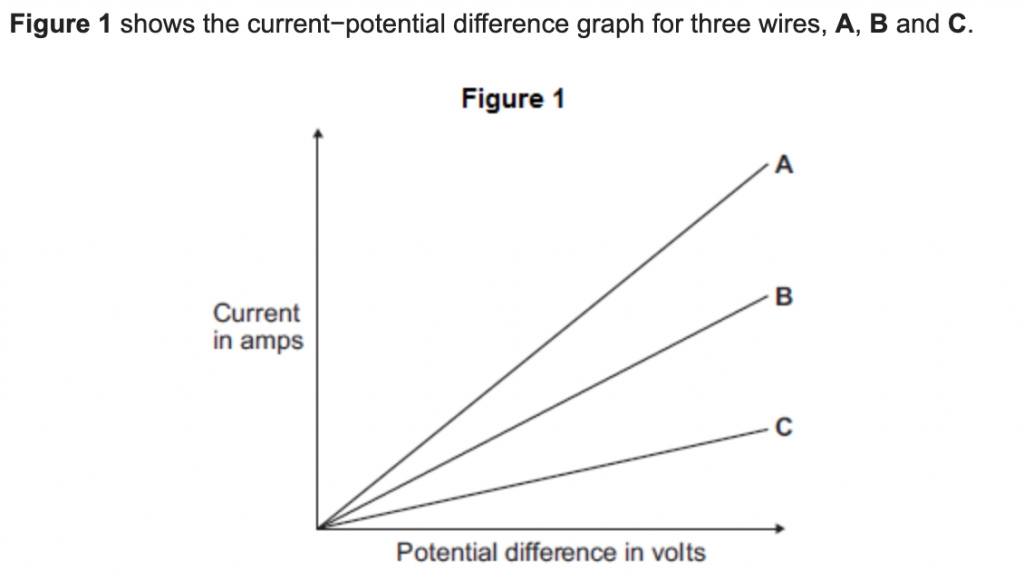Types of Resistor
For some resistors, the value of the resistance remains constant but that in others it can change as the current changes.
The resistance of components such as lamps, diodes, thermistors and LDRs is not constant; it changes with the current through the component.
The resistance of a filament lamp increases as the temperature of the filament increases. The resistance increases because as the ions in the metal warm up they also vibrate more.

The current through a diode flows in one direction only. The diode has a very high resistance in the reverse direction.

The current through an ohmic conductor (at a constant temperature) is directly proportional to the potential difference across the resistor. This means that the resistance remains constant as the current changes.

On the graphs above, the gradient is equal to 1/resistance. So a steep line is a low resistance.
The resistance of a thermistor decreases as the temperature increases. Thermistors are used in temperature sensing circuits, like thermostats.
The resistance of an LDR decreases as light intensity increases. LDRs are used in light sensing circuits.
Question: Using Figure 1, how can you tell that the temperature of each wire is constant?
The potential difference is directly proportional to the current
The graph is a straight line through the origin, which has a constant gradient

Question: The resistance of the metal filament inside the bulb increases as the potential difference across the bulb increases, shown on the graph in Figure 2.
Explain why. (3 marks)
metals contain free electrons (and ions)
as temperature of filament increases ions vibrate faster
so electrons collide more (frequently) with the ions


To investigate how the potential difference across a component changes when you change the current through the component:
Use the variable resistor to change the current in the circuit
Record the potential difference and the current
Plot a graph of potential difference on the x-axis and current on the y-axis
The resistance at any point is 1/gradient
Question: A student is investigating some electrical components.
Describe how the student could set up a circuit to find the resistance of a lamp. Draw a circuit diagram too. (6 marks)

Use the ammeter to measure the current
Use the voltmeter to measure the potential difference
Use the variable resistor to vary the current in the circuit, record current and PD for at least 6 pairs
Plot a graph with potential difference on the x-axis and current on the y-axis.
The resistance at any point on the graph is 1/gradient.
